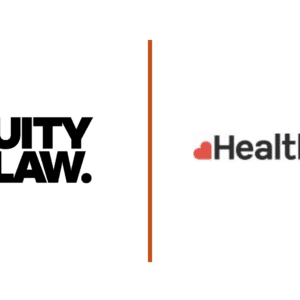The Right to be Safe in an Unsafe World
Key Contact: Claire Knowles
Author: Adam McGlynn
As lockdown restrictions begin to relax, and the Coronavirus Job Retention Scheme crawls towards an eventual conclusion, employees are gradually returning to work across the UK. However, the threat of Coronavirus has not yet been fully quashed and fears of a ‘second spike’ are justifiable, if not rational. Employer obligations to protect the health and safety of their employees nevertheless continue, raising questions about the mitigating steps employers should take and whether concerned employees can refuse to return to work.
Obligations on Employers
Health and Safety responsibilities are undeniable. A host of obligations are incorporated in employment relationships from every possible source, from implied contractual terms and tort common law to EU directives and domestic legislation. The primary UK statutory authority is the Health and Safety at Work etc. Act 1974 (HSW Act) which codifies the general duties for both employers and employees. At its core, the HSW Act requires employers to take reasonable steps to provide a safe working environment and a safe system of work, to keep workers informed and well-trained, and otherwise mitigate risks posed by the business. Employees are not free from responsibility as they must cooperate with their employer as well as take reasonable steps to care for their own health and safety and the safety of those around them.
Exercising the Right to be Safe
The Occupational Safety and Health Framework Directive 1989 (OSH Directive) provides the right, at EU level, that workers cannot be disadvantaged for leaving their workplace in the event of serious, imminent, and unavoidable danger. This has been adopted in domestic law under sections 44(1) and 100(1) of the Employment Rights Act 1996 (ERA) which protects employees from detriment and dismissal where:
- the employee takes appropriate steps to protect themself or others from danger which they reasonably believe to be serious and imminent; or
- the employee refuses to remain in, or return to, their workplace, if they cannot reasonably be expected to avoid that danger.
Though the ERA protection only applies to employees, there is a strong argument that the OSH Directive intended it to extend to all ‘workers’. By exercising this right, workers could legitimately refuse to attend work based on a fear of catching or spreading COVID-19 if they have a reasonable belief that the danger is serious and imminent.
Reasonable Belief
COVID-19 is, of course, a serious disease which has caused tragic loss of life across the world. However, there are thousands of deadly diseases out there that do not even cross our mind during the working day, and so a threshold must exist.
Reasonable belief consists of a subjective test of the worker’s actual belief of serious and imminent danger and an objective test of whether this belief is reasonable in the circumstances. This belief can prevail regardless of the employer’s position and even if it is mistaken. Reasonability will take a variety of factors into account including government guidance, official infection statistics, the worker’s medical circumstances, and steps the business is taking to mitigate the risk of infection. While government guidance still has no official legal authority it will, therefore, be highly persuasive in the evaluation of a worker’s ‘reasonable’ beliefs.
Travel
Travelling to work brings about its own set of risks. A worker may need to use public transport and multiple workers may be bottlenecked at entrance and exit points. Case law extends the protection from detriment and dismissal to the refusal to travel where a reasonable and genuinely held belief in serious and imminent danger exists. Employers can, however, take steps to mitigate these risks to reduce the reasonability of such a belief. For example, those who must travel can work to amended shift patterns and/or staggered working hours to reduce the number of people arriving and departing at any one time and avoid peak public transport times.
Options for Employers
If a worker refuses to attend work due to a genuine and reasonable belief of serious and imminent danger then withholding pay, initiating a disciplinary process, or dismissing them would breach s44/100 ERA. In order to take such steps in response to a refusal to work, employers will need to ensure that such a belief would be unreasonable. Some steps employers should consider include:
Risk assessments
Under s3 of The Management of Health and Safety at Work Regulations 1999 every employer must conduct a health and safety risk assessment and keep it updated. Businesses should revisit this regularly during this time of heightened concern and follow through with hygiene and social distancing measures.
Consult with employees
Article 11 of the OSH Directive and regulation 3 of the Health and Safety (Consultation with Employees) Regulations 1996 require employers to consult employees and/or their representatives on questions of health and safety at work. Consultation should not be understood merely as a compliance exercise though as employees may offer useful insight and meaningful engagement from the business will weaken a ‘reasonable’ belief of danger.
Keep employees informed
This serves multiple purposes. Communication will affect the reasonability of a worker’s belief and so employers should be open about the risks and the steps they have taken in response. Employers can also communicate accurate information and government guidance to avoid mistaken beliefs which may have been caused by rumour or ‘fake news’.
Take worker concerns seriously
Workers making disclosures about previous, current, or likely risks to health and safety will be caught by whistleblowing protections in the ERA. Concerns and complaints should, therefore, be respected, even if unfounded, and workers not disadvantaged as a result.
Continue working from home practices
Many of the issues discussed can be avoided if the employee can work from home. Employers should remember, however, that they are responsible for the mental wellbeing of their employees as well as their physical safety. Our employment team can help prepare an updated working from home policy to address these issues, among others.
If you have questions or concerns about health and safety obligations, return to work arrangements, homeworking policies, risk assessments or any other matter, please contact our Employment team.
Claire Knowles – Partner
Mark Alaszewski – Associate
Rebecca Mahon – Solicitor
Adam McGlynn – Trainee Solicitor






